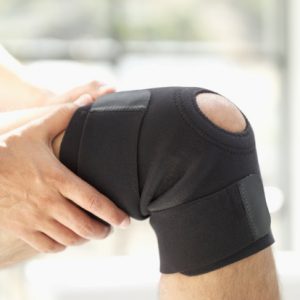 Internal derangement of knee is a medical term that encompasses a few conditions affecting the knee area. This may include joint disorders, loose bodies in the knee joint, damaged ligaments and torn meniscus, occurring on their own or in combination. External trauma to the knee due to sports like football and basketball, or even chronic overuse usually trigger internal derangement of the knee. The condition does not include osteoarthritis of the knee and the like.
Internal derangement of knee is a medical term that encompasses a few conditions affecting the knee area. This may include joint disorders, loose bodies in the knee joint, damaged ligaments and torn meniscus, occurring on their own or in combination. External trauma to the knee due to sports like football and basketball, or even chronic overuse usually trigger internal derangement of the knee. The condition does not include osteoarthritis of the knee and the like.
Ligaments found in the knee joint are tough connective tissues that connect bone together. The two important ligaments in the knee are the ACL (anterior cruciate ligament)) and PCL (posterior cruciate ligament). Another important structure found in the knee is called the meniscus. It resembles a rubbery disc and helps the knee joint balance the total body weight equally.
What are causes and symptoms of internal derangement of knee?
Advertisement
Injuries to the knee structure can happen at any age, but some injujries are more common at a certain age and at certain structural sites than others. The following are some of the causes of internal derangement of the knee:
Strenuous physical activity. For example, sports, overworking, and accidents. These activities can put lots amounts of stress on the ligaments and other structures in the knee joint, leading to their damage.
Sudden stop while running. The force required to stop abruptly may be enough to damage knee structures.
Direct injury to the knee. A common cause of internal derangement of the knee.
Ligament injuries. You are more likely to get ligament injuries in certain sports such as rugby and football.
Anterior cruciate ligament injury. Commonly occurs in gymnastics.
Landing heavily on a flexed knee joint. This can put excessive amount of pressure on the knee joint.
Old age (over 60 years). Elderly people are more prone to internal derangement of the knee than younger people.
Symptoms of internal derangement of the knee may include:
- Feeling and/or hearing a snapping or tearing sensation at the time of injury
- Marked swelling within a couple of hours of injury
- The immediate sensation of instability
How to diagnose internal derangement of knee?
After your doctor has reviewed a full history of how you developed internal derangement of the knee, they will perform a physical exam to gauge the extent of the damage through various moves and gestures. Initially, they will look for any cuts, bruises, or swelling, as well as for any signs of dislocation or instability of the knee joint.
Once your doctor has a good idea of what the injury may be, they will require imagining tests to get a clearer picture. This may include the use of:
- X-ray
- CT scan
- Arthroscopy (using a tiny camera to see inside the joint)
- MRI (the most accurate test to view the structure of ligaments, tendons, and menisci)
How to treat internal derangement of knee?
The severity of the knee injury will often dictate the extent of treatment needed for each case, with knee surgery being ultimate treatment. It is important to follow the advice from your doctor to prevent repeat injury and promote the healing. The following tips may also help with your knee recovery:
Keep the weight off the knee joint. Can be achieved with the use of crutches.
Apply cold compresses. Can help ease pain and swelling. Ice may be used and applied every couple of hours for 20 minutes at a time.
Wear compression bandage. Can help control swelling.
Keep the knee elevated. Will help reduce swelling and promote blood circulation
Wear special knee braces. To stabilize and protect the injured knee
Take non-steroidal anti-inflammatory medication (NSAIDs). Can be purchased over the counter and can help with pain and swelling. It is important to use these sparingly and at your doctor’s discretion.
Stretch. Can help strengthen the knee and speed up the healing process.
Preventing internal derangement of knee?
It is not always possible to prevent accidents that may cause internal derangement of the knee, but there are a few things you can do to minimize your chances of injury:
Keep your leg muscles strong. Can be best achieved through stretching and exercise.
Advertisement
Warm up before activities. Before you begin any strenuous activity, it is a good idea to stretch out the joints to maintain flexibility.
Keep stretching. By making stretching a part of your daily routine, you can increase flexibility and maintain it throughout life.
Correct your form and posture. When performing twisting movements, having bad form can lead to injury.
